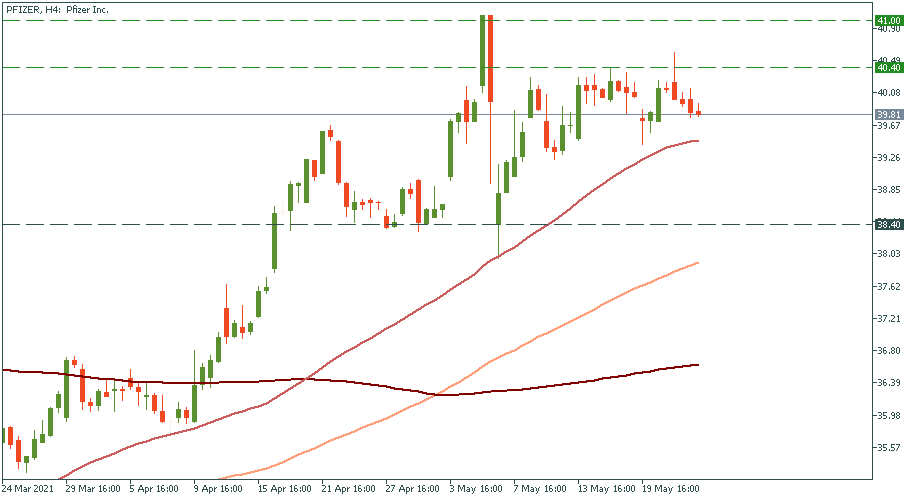Trading Accounts
Trading Conditions
Financials
CFD Trading instruments

Don’t waste your time – keep track of how NFP affects the US dollar!
The ASIC policy prohibits us from providing services to clients in your region. Are you already registered with FBS and want to continue working in your Personal area?
Personal areaOwning a stock of a public company means being one of its shareholders. As such, you’re entitled to a part of the company profit proportionate to your ownership as you’d be in any other case where you have a share of a business. That’s what makes stocks potentially more attractive against other asset types: you can have additional income-earning dividends on top of the usual possible value gains or good trading opportunities.
When you trade any asset, you’re supposed to buy at one price and sell at a higher one. The difference is your profit. It’s exactly the same with stocks, and the profit, in this case, would be called a value gain – because the profit was made on the higher value that the stock came to have. That’s what makes trading stocks similar to other assets.
In the meantime, while you’re holding stock, you’re entitled to get the profit its company made during the last quarter. If you have the stock at hand on the day of the dividend payout date – you’ll get it. So, it’s additional income on top of the abovementioned possible value gain or a good trading opportunity. That’s the advantage of trading stocks against, say, currencies.
Not all stocks pay dividends. You have to know which ones do - a Dividend Calendar shows them.
Typically, with US shares, dividends are quarterly payments. That means you receive your share of the company profit every three months. In other countries, the payments may be yearly.
How does one know what day the dividend is paid? Once again, the Economic Calendar – Dividend section will help you.
Every company decides that according to their dividend payout policy. Generally, if 30-40% of the company’s net income is distributed among shareholders, it’s considered a standard payout ratio (a percentage which the total dividends for distribution take in the total company net profit).
There is a time lag between the date of dividend announcement and the date of the dividend payout. After the dividend amount is announced, the market reacts to it the same way it reacts to anything else: if the actual figure is higher than the expectations, the stock value rises; if it fails to meet the forecasts, the value drops. This relation allows specific stock-trading strategies.
A simple position-trading approach. Buy a stock with healthy growth prospects and keep it for months and years. Eventually, you will potentially see it rise in value, and while you’re holding it, dividends will be coming to your account every three months. Experts recommend buying at local lows to ensure a higher value gain whenever you choose to sell the stock.
As this strategy implies being date-specific, here you go with some terms.
That’s when a company announces the amount of the coming dividend – upon receiving this information, the stock may rise or lose value depending on whether the market was satisfied or unamused with the announced dividend. Usually, during the announcement, the record date is set.
Essentially, it’s a “cut-off” day: if you’ve been the last one to hold the stock when this day comes, you’ll receive the due dividend. If you get the stock after the record date, you’re not entitled to the coming dividend payout. Rather, you’re in for the next one. Now, in order for the last owner of the stock to get the dividend due on the record date, the dividend amount is deducted from the stock value one working day before the record day – that’s the ex-dividend date.
Therefore, one business day before the record date, the stock will see its value reduced by the dividend amount – that’s a dividend gap, and that’s when you may consider buying a stock at a lower value.
May 6 saw the Prizer stock open at a sudden drop to the support of $38.40 that made the price bounce upwards at the end of April. As the due dividend was cut off the stock value on May 6, the stock got down from the new high of $41 to the support of $38.40 – that was a dividend gap. Prudent traders were there to pick it up and eventually see it gain value at $40.40. That’s how you trade the dividend gap.

From the S&P 500 list, there are companies that have been consistently paying and increasing their base dividend on a yearly basis. That means, over years and decades, their shareholders have been receiving higher dividend incomes apart from mostly increasing stock value. Here are some of them to trade with FBS: 3M company, Coca-Cola, Johnson & Johnson, Procter & Gamble, PepsiCo, McDonald’s, Walmart, AT&T.